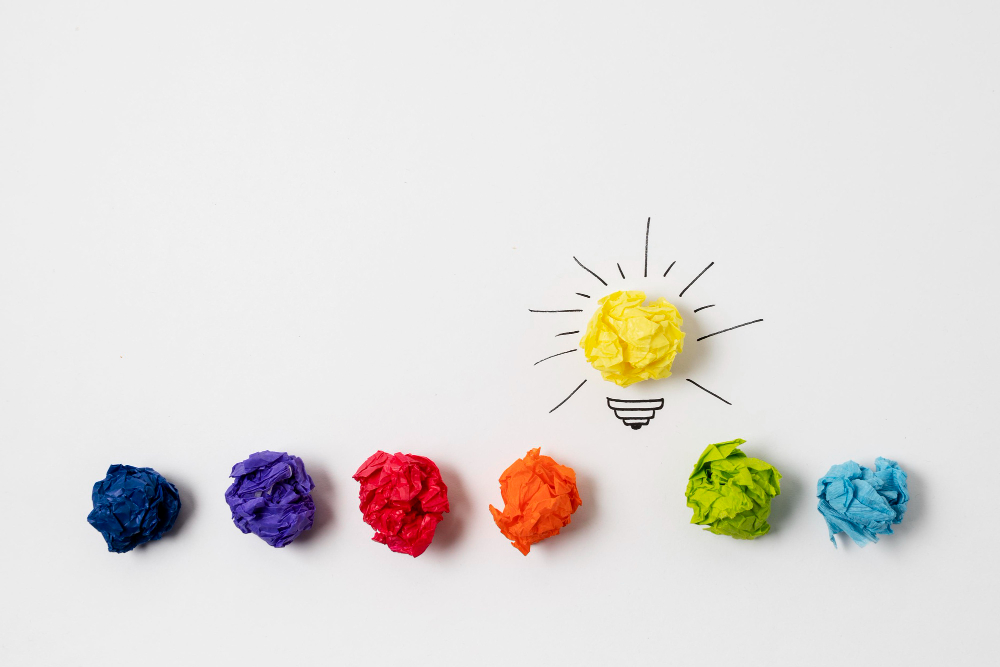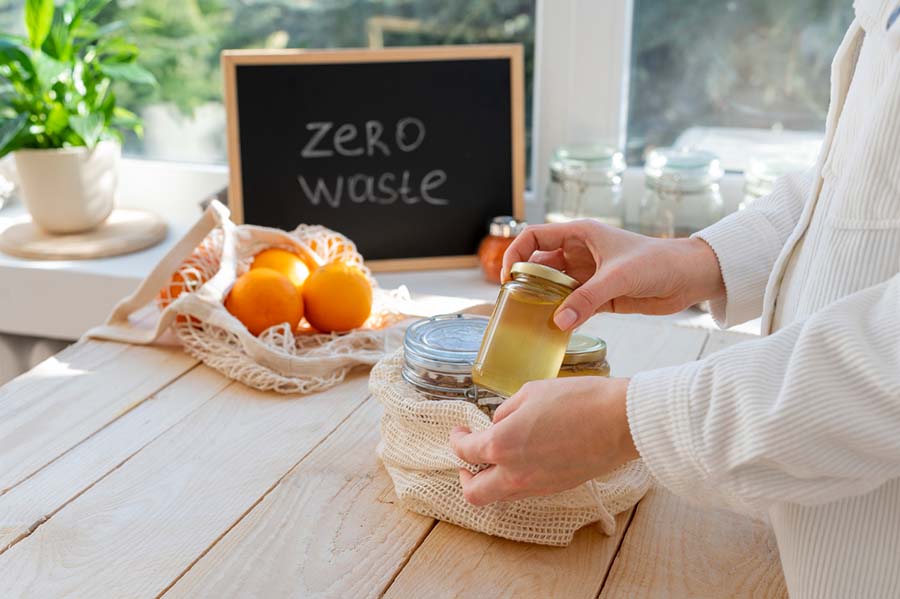Top 10 Eco-Friendly Products for Your Sustainable Life!
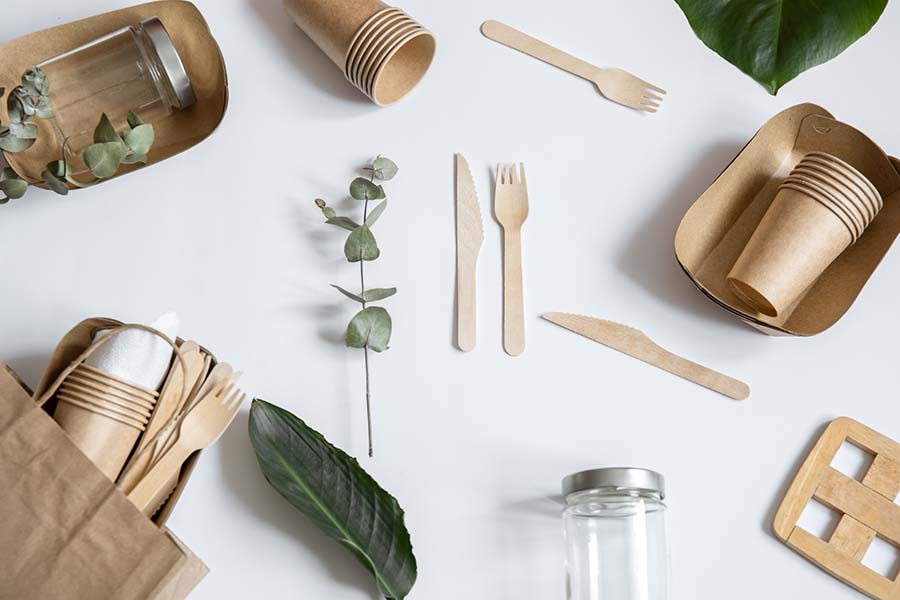
Introduction
As the world faces an escalating climate crisis, the importance of adopting an eco-friendly lifestyle cannot be overstated. With environmental issues such as pollution, deforestation, and plastic waste impacting our planet, individuals must make conscious choices that minimise their ecological footprint. By incorporating eco-friendly products into our daily routines, we can collectively contribute to a healthier, more sustainable world for future generations.
Choosing sustainable products not only benefits the environment but also positively impacts our lives in various ways:
Cost savings: Many eco-friendly products are reusable, durable, and energy-efficient, which can save money in the long run by reducing the need for frequent replacements and lowering utility bills.
Health benefits: Sustainable products often use non-toxic materials and are free from harmful chemicals, promoting a healthier living environment.
Conservation of natural resources: By opting for eco-friendly alternatives, we reduce the demand for non-renewable resources, thereby preserving them for future generations.
Minimising waste: Sustainable products often have biodegradable or recyclable packaging, which helps reduce the amount of waste in landfills or pollutes our oceans.
Positive social impact: Supporting eco-friendly products can encourage companies to adopt more sustainable practices, leading to a greener economy.
“A single reusable bag can eliminate the use of 1,500 plastic bags in its lifetime.”
— Waste Management Northwest
This blog post will explore ten eco-friendly products you can easily incorporate into your lifestyle. These products not only help in reducing your environmental impact but also provide practical solutions to everyday needs:
- Reusable shopping bags
- Stainless steel water bottles
- Bamboo toothbrushes
- Solar-powered chargers
- Beeswax food wraps
- LED light bulbs
- Biodegradable cleaning products
- Compostable trash bags
- Reusable produce bags
- Cloth napkins
By embracing these sustainable alternatives, you can actively participate in the global movement towards a greener, healthier planet while enjoying its benefits.
Reusable Shopping Bags
The problem with single-use plastic bags
Single-use plastic bags pose a significant threat to the environment due to their non-biodegradable nature, which causes them to persist in landfills and oceans for hundreds of years. The production of plastic bags also consumes non-renewable resources, contributing to greenhouse gas emissions. In addition, once discarded, plastic bags often find their way into waterways and oceans, where they endanger marine life through ingestion or entanglement.
Different types of reusable bags
There are various types of reusable bags available, each made from different materials and offering unique benefits:
Canvas bags: These bags are sturdy and durable, making them ideal for carrying heavy groceries. They can be easily washed and maintained, providing long-lasting utility.
Jute bags: Jute bags are made from natural fibres and are biodegradable. They are also highly durable and can support heavy loads.
Recycled PET bags: These bags are made from recycled plastic bottles, making them an eco-friendly alternative that helps reduce plastic waste. They are lightweight, water-resistant, and easy to clean.
Cotton bags: Cotton bags are soft, lightweight, and biodegradable. They can be easily folded and stored when not in use.
Mesh produce bags: Mesh bags are designed specifically for carrying fruits and vegetables, allowing them to breathe and stay fresh longer. These bags are lightweight and washable.
“Americans use 100 billion plastic bags per year, requiring 12 million barrels of oil to produce.”
— Center for Biological Diversity
How to choose the right reusable bag
When selecting a reusable bag, consider the following factors:
Purpose: Determine the primary use of the bag, whether it’s for groceries, produce, or general shopping, and choose a bag that suits your needs.
Durability: Opt for a bag made from high-quality materials that can withstand regular use and carry heavy loads without tearing.
Washability: Choose a bag that is easy to clean and maintain, ensuring it stays hygienic and presentable.
Size and storage: Consider the size of the bag, ensuring it’s spacious enough for your needs. Bags that can be easily folded and stored when not in use are also convenient.
Material: Select a bag made from eco-friendly materials, such as organic cotton, jute, or recycled PET, to minimise your environmental impact.
Investing in a reusable shopping bag that suits your needs can significantly reduce your reliance on single-use plastic bags, contributing to a cleaner and greener environment.
Stainless Steel Water Bottles
Environmental impact of plastic bottles
Plastic water bottle production, use, and disposal significantly negatively impact the environment. Plastic bottles also release harmful chemicals into the environment as they break down, posing a threat to human health and wildlife.
Advantages of stainless steel bottles
Switching to stainless steel water bottles is a simple yet effective way to reduce your environmental footprint and enjoy various benefits:
Durability: Stainless steel bottles are highly resistant to denting, cracking, and breaking, ensuring they last for years with proper care.
Insulation: Many stainless steel bottles have double-wall insulation, which helps keep beverages cold or hot for extended periods, making them suitable for various activities.
Health benefits: Stainless steel bottles do not contain harmful chemicals like BPA or phthalates, ensuring your water remains safe to drink.
Taste: Stainless steel does not impart any flavours to your water, maintaining its natural taste and freshness.
Easy cleaning: Stainless steel bottles are easy to clean and are often dishwasher-safe, ensuring they remain hygienic and odour-free.
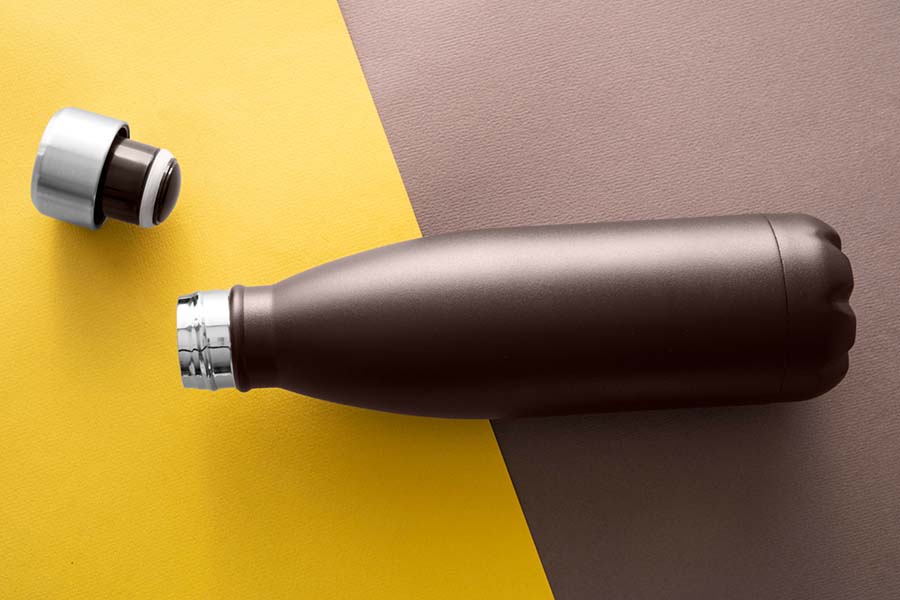
Selecting the perfect stainless steel water bottle
Take the following aspects into account while selecting a stainless steel water bottle:
Size and capacity: Determine the ideal bottle size and capacity based on your daily water intake and activities. Bottles typically range from 12 oz to 64 oz.
Insulation: Opt for a double-wall insulated bottle to keep your beverages hot or cold for extended periods.
Lid type: Consider the kind of lid that best suits your needs, such as a flip-top, screw-on, or straw lid, depending on your preferred drinking method.
Ease of cleaning: Choose a bottle that is easy to clean, preferably with a wide-mouth design or dishwasher-safe components.
Design and aesthetics: Select a bottle that appeals to your style and preferences, with options ranging from sleek and minimalist to vibrant and patterned designs.
Incorporating a stainless steel water bottle into your daily routine can significantly reduce your reliance on disposable plastic bottles, promote a healthier lifestyle, and contribute to a more sustainable environment.
Bamboo Toothbrushes
The issue with plastic toothbrushes
Plastic toothbrushes contribute significantly to the global plastic waste problem. These toothbrushes take centuries to decompose, releasing harmful chemicals into the environment. Many plastic toothbrushes also end up in our oceans, where they pose a threat to marine life. Since dentists recommend replacing your toothbrush every three to four months, switching to a more sustainable alternative is essential to reducing plastic waste.
Why bamboo is a sustainable alternative
Bamboo toothbrushes offer a more eco-friendly alternative to traditional plastic toothbrushes due to the following reasons:
Renewable resource: Bamboo is one of the fastest-growing plants on Earth, making it a highly renewable and sustainable material. It can be harvested without causing permanent damage to the environment, as it regrows rapidly after being cut.
Biodegradable: Bamboo toothbrush handles are biodegradable and can decompose naturally, significantly reducing their ecological impact compared to plastic toothbrushes.
Antimicrobial properties: Bamboo has natural antimicrobial properties, which help keep your toothbrush clean and free from bacteria.
Low carbon footprint: The production of bamboo toothbrushes has a lower carbon footprint than plastic toothbrushes, as bamboo absorbs more carbon dioxide during its growth and requires less energy to process.
“Switching from a plastic toothbrush to a bamboo toothbrush can save over 4.9 billion plastic toothbrushes from entering landfills each year.”
— National Geographic
How to properly care for a bamboo toothbrush
To ensure the longevity and effectiveness of your bamboo toothbrush, follow these care tips:
Rinse thoroughly: After each use, rinse your toothbrush under running water to remove toothpaste and debris.
Store in a dry environment: Keep your toothbrush in a well-ventilated area, away from excessive moisture, which can cause the bamboo to deteriorate.
Replace regularly: Bamboo toothbrushes should be replaced every three to four months or when the bristles become frayed.
Dispose of it responsibly: When replacing your toothbrush, remove the bristles using pliers and dispose of them in the appropriate recycling bin. In addition, the bamboo handle can be composted or repurposed for various uses, such as plant markers or craft projects.
By choosing a bamboo toothbrush, you can maintain your oral hygiene while minimising your environmental impact and contributing to a more sustainable future.
Solar-Powered Chargers
The benefits of solar energy
Solar energy offers several advantages over traditional, non-renewable energy sources:
Renewable: Solar power, a plentiful and replenishable energy source, is a viable and eco-friendly option to address our energy demands.
Environmentally friendly: Solar power generation produces no greenhouse gas emissions or air pollution, reducing our reliance on fossil fuels and contributing to a cleaner environment.
Cost-effective: While the initial investment in solar-powered devices may be higher, the long-term savings on energy bills and the reduced environmental impact make solar energy a cost-effective choice.
Energy independence: Using solar-powered chargers can help reduce our dependence on the power grid, promoting energy independence and resilience in the face of power outages or fluctuations.
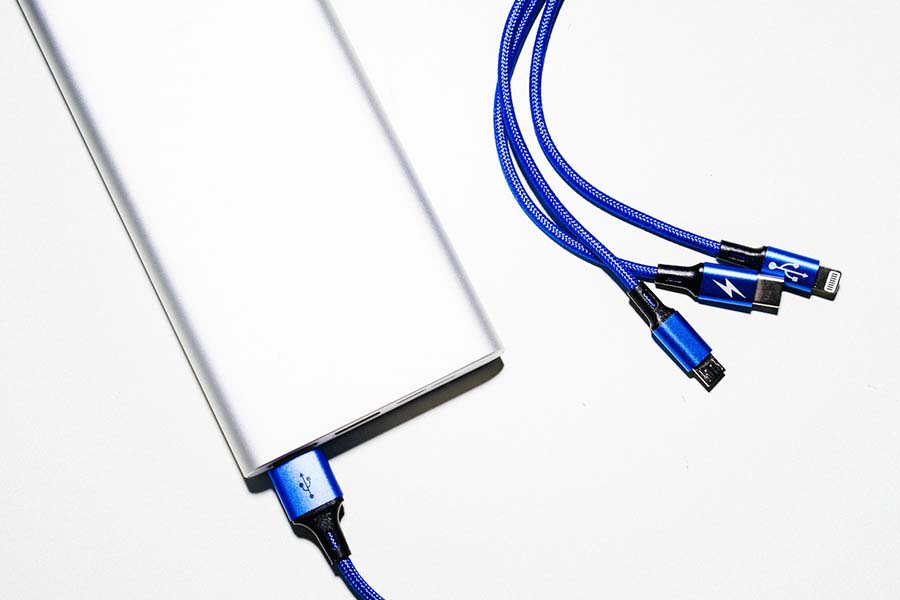
Different types of solar chargers
Solar chargers come in various designs and capacities to suit your needs and preferences:
Portable solar chargers: These compact, lightweight chargers are designed for on-the-go use and are ideal for charging smartphones, tablets, and other small devices. They often come with USB ports, making them compatible with various electronic devices.
Foldable solar panels: They are larger and more powerful than portable solar chargers, making them suitable for charging laptops, cameras, and other high-capacity devices. They can be easily folded and stored when unused, providing a convenient and efficient charging solution for outdoor enthusiasts and travellers.
Solar backpacks: Solar backpacks integrate solar panels into the fabric, allowing you to charge your devices while on the move. They are a practical and stylish option for those who want to stay connected during outdoor activities like hiking or camping.
Solar power banks: Solar power banks combine the functionality of a solar charger with a portable battery, storing energy for later use. They are ideal for limited sunlight, ensuring you always have a backup power source.
Tips for maximising solar charger efficiency
For optimal performance from your solar charger, adhere to the following suggestions:
Optimal positioning: Place your solar charger in direct sunlight to maximise energy absorption. Keep in mind that the sun’s angle changes throughout the day, so adjust the position of your charger accordingly to ensure optimal exposure.
Cleanliness: Keep the solar panels clean and free of dust or debris, as dirt can reduce the charger’s efficiency. Wipe the panels gently with a soft, damp cloth to remove buildup.
Avoid overcharging: Keep an eye on your devices during charging to avoid overcharging, as this can cause harm to the battery or reduce its longevity. While many solar chargers come with integrated safety measures to guard against overcharging, it remains crucial to supervise the charging procedure.
Compatibility: Ensure your solar charger is compatible with your devices, considering the power requirements and charging port types. Some chargers may require an adapter to work with specific devices.
Integrating solar-powered chargers into your everyday habits enables you to tap into the potential of renewable energy sources, decrease your carbon emissions, and foster a greener way of living.
Beeswax Food Wraps
The problem with plastic cling wrap
Plastic cling wrap is a common household item used to preserve food but it has significant environmental drawbacks. The average person uses approximately 18 miles of cling wrap annually, contributing to plastic waste (National Geographic). In addition, plastic wrap is made from non-renewable resources, takes centuries to break down, and is difficult to recycle, often ending up in landfills or oceans. Moreover, it can leach harmful chemicals into food, primarily when used in high-temperature applications, posing a risk to human health.
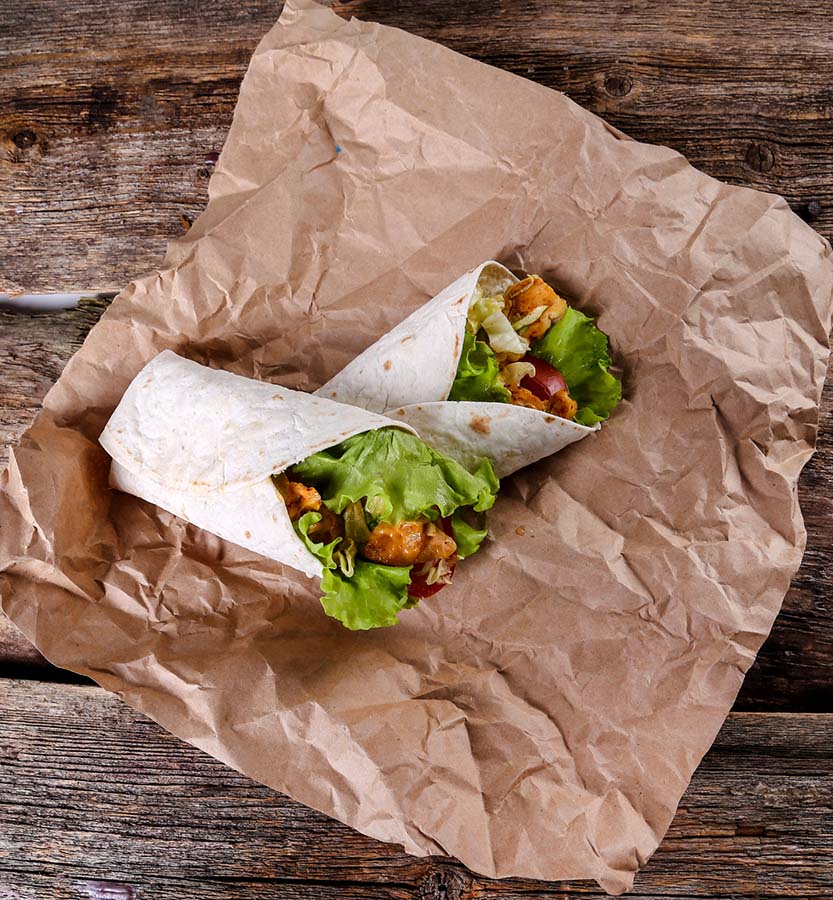
Benefits of beeswax food wraps
Beeswax food wraps are an eco-friendly and reusable alternative to plastic cling wrap, offering several advantages:
Sustainability: Beeswax wraps are made from natural materials, such as organic cotton, beeswax, jojoba oil, and tree resin, which are biodegradable and have a lower environmental impact.
Reusability: Beeswax wraps can be washed and reused for up to a year, significantly reducing plastic waste.
Breathability: Beeswax wraps allow food to breathe, helping to maintain freshness and prolong shelf life.
Versatility: Beeswax wraps can cover various food items, including fruits, vegetables, cheese, and baked goods, and can be moulded to fit different containers.
Chemical-free: Beeswax wraps do not contain harmful chemicals found in plastic wrap, ensuring your food remains safe.
How to use and maintain beeswax wraps
To get the most out of your beeswax food wraps, follow these tips on usage and maintenance:
Use: Warm the beeswax wrap in your hands to make it pliable, and gently mould it around the food item or container. The warmth of your hands will activate the beeswax, allowing it to stick to itself and create a seal.
Clean: Gently wash the beeswax wrap in cool water with mild soap afterwards. Avoid hot water, as it can melt the beeswax coating. Rinse and allow it to air dry before storing it for future use.
Refresh: If your beeswax wrap becomes less sticky over time, refresh it by placing it on a baking sheet in a low-temperature oven (200°F) for a few minutes until the beeswax melts. Then, allow it to cool and harden before using it again.
Replace: When your beeswax wrap reaches the end of its life (usually after about a year), it can be composted or used as a natural fire starter.
By incorporating beeswax food wraps into your kitchen routine, you can reduce reliance on plastic cling wrap, promote a healthier lifestyle, and contribute to a more sustainable environment.
LED Light Bulbs
The energy efficiency of LED bulbs
LED (Light Emitting Diode) bulbs are significantly more energy-efficient than traditional incandescent or compact fluorescent light (CFL) bulbs. LED bulbs consume up to 80% less energy than incandescent bulbs and 40% less energy than CFLs (Energy.gov). Additionally, LED bulbs have a longer lifespan, with some lasting up to 25,000 hours, compared to 1,000 hours for incandescent bulbs and 10,000 hours for CFLs. The increased efficiency and lifespan of LED bulbs make them a more sustainable and environmentally friendly lighting option.
The cost savings of switching to LED
Switching to LED bulbs can significantly save energy bills and replacement costs. While LED bulbs have a higher upfront cost, their energy efficiency and longer lifespan quickly offset the initial expense. Over the lifetime of a single LED bulb, you can save up to $200 in energy costs compared to an incandescent bulb (Energy Star). Replacing your home’s lighting with LED bulbs can significantly reduce your energy consumption and enjoy long-term financial benefits.
“If everyone in the United States switched to using LED light bulbs, the energy savings would be equivalent to removing the greenhouse gas emissions of 5.5 million cars.”
— U.S. Department of Energy
How to select the right LED bulb for your needs
When choosing an LED bulb, consider the following factors:
Brightness and colour temperature: LED bulbs are available in brightness levels (measured in lumens) and colour temperatures (measured in Kelvin). Determine your preferred brightness and colour temperature, such as warm white (2700K), cool white (4100K), or daylight (5000K), to create the desired atmosphere in your space.
Dimmability: If you want to use your LED bulbs with a dimmer switch, ensure that the bulbs are labelled as dimmable, as not all LED bulbs are compatible with dimmers.
Bulb shape and size: LED bulbs come in various shapes and sizes, such as A-type, globe, candle, or floodlight bulbs. Choose a shape and size that fits your fixtures and complements your room’s aesthetics.
Base type: Ensure the LED bulb has the correct base type (e.g., screw-in or pin type) to fit your fixtures.
Energy Star certification: Look for LED bulbs with an Energy Star certification, which indicates that they meet strict energy efficiency and performance criteria set by the Environmental Protection Agency (EPA).
By selecting the right LED bulbs for your needs, you can enjoy the benefits of energy-efficient lighting while contributing to a more sustainable environment.
Biodegradable Cleaning Products
The environmental impact of conventional cleaning products
Traditional cleaning products frequently include potent chemicals that may harm the environment and human well-being. When washed down the drain, these chemicals can contaminate water supplies and harm aquatic ecosystems. Moreover, the production and disposal of conventional cleaning products contribute to pollution and resource depletion. Many traditional cleaning products also come in single-use plastic packaging, exacerbating the global plastic waste problem.

Advantages of biodegradable cleaners
Biodegradable cleaning products offer a more environmentally friendly alternative to conventional cleaners, with several benefits:
Eco-friendly ingredients: Biodegradable cleaners are made from natural, plant-based ingredients that are safer for the environment and break down more rapidly than synthetic chemicals.
Reduced water pollution: Biodegradable cleaning products have a lower impact on aquatic ecosystems, as they break down into harmless substances that do not harm marine life or disrupt the balance of the ecosystem.
Healthier indoor air quality: Since biodegradable cleaners contain fewer harsh chemicals, they release fewer volatile organic compounds (VOCs) into the air, improving indoor air quality and reducing health risks associated with chemical exposure.
Sustainable packaging: Numerous environmentally-conscious cleaning brands employ recyclable or biodegradable packaging materials to minimise their ecological footprint further.
Top eco-friendly cleaning brands to consider
When choosing biodegradable cleaning products, consider these reputable and eco-friendly brands:
Seventh Generation: This brand offers a wide range of biodegradable cleaning products, including dish soap, laundry detergent, and all-purpose cleaners, made from plant-based ingredients and packaged in recycled materials.
Ecover: Ecover produces eco-friendly cleaning products, such as dishwashing liquid, laundry detergent, and surface cleaners, focusing on renewable and biodegradable ingredients.
Method: Method offers a variety of cleaning products, including hand soap, laundry detergent, and bathroom cleaners, made from biodegradable ingredients and packaged in recycled plastic.
Dr Bronner’s: Dr Bronner’s is well-known for its versatile castile soap, which can be used for various cleaning tasks, from washing dishes to mopping floors. The soap is made from organic, plant-based ingredients and is fully biodegradable.
Incorporating biodegradable cleaning products into your household routine can minimise environmental impact, improve indoor air quality, and support a more sustainable future.
Compostable Trash Bags
The issues with traditional plastic trash bags
Traditional plastic trash bags contribute to the global plastic waste problem, as they are made from non-renewable resources, take centuries to decompose, and release harmful chemicals into the environment during degradation. Moreover, plastic bags often end up in landfills or oceans, where they pose a threat to wildlife and marine ecosystems. By switching to compostable trash bags, you can help reduce plastic waste and its associated environmental impacts.
Benefits of compostable bags
Compostable trash bags offer several advantages over traditional plastic bags:
Biodegradability: Compostable bags are made from plant-based materials, such as cornstarch or potato starch, which break down naturally in the environment, reducing the accumulation of plastic waste.
Reduced greenhouse gas emissions: Compostable bags emit fewer greenhouse gases during production and decomposition than plastic bags, contributing to a lower carbon footprint.
Waste diversion: Compostable bags can collect and dispose of organic waste, such as food scraps, in a composting system, diverting waste from landfills and promoting a circular economy.
Compatibility with composting systems: Compostable bags are designed to break down in commercial or home composting systems, making them a convenient option for households practising composting.
How to use compostable bags effectively
To get the most out of your compostable trash bags, follow these tips:
Choose the right size: Select compostable bags that fit your trash cans or compost bins properly, ensuring they can hold the intended amount of waste without tearing or leaking.
Check for certification: Look for compostable bags certified by reputable organisations, such as the Biodegradable Products Institute (BPI), which ensures that the bags meet specific compostability standards.
Use within shelf life: Compostable bags have a limited shelf life, typically 6-12 months. Therefore, store them in a cool, dry place, away from direct sunlight, and use them within the recommended time frame.
Dispose of properly: If using compostable bags for organic waste, dispose of them in a home composting system or a commercial composting facility, if available. If using compostable bags for general waste, be aware that they may not break down effectively in a landfill, as landfills often need more conditions for composting.
Compostable trash bags effectively minimise plastic waste, support sustainable waste management practices, and contribute to a cleaner environment.
Reusable Produce Bags
The problem with disposable produce bags
Disposable produce bags, commonly found in supermarkets and grocery stores, contribute to the global plastic waste problem. These bags are often used only once before being thrown away, leading to significant plastic waste that can take centuries to decompose. Moreover, disposable produce bags can end up in landfills, oceans, and other natural environments, threatening wildlife and ecosystems. Using reusable produce bags can help reduce plastic waste and its associated environmental impacts.
Different types of reusable produce bags
There are various types of reusable produce bags available, made from different materials to suit your preferences and needs:
Cotton: Cotton produce bags are made from natural fibres and are a popular choice due to their durability, breathability, and washability. They come in different styles, such as drawstring or mesh designs.
Polyester: Polyester produce bags are lightweight, durable, and moisture-resistant. They often feature a mesh design, allowing for good airflow and easy visibility of the contents.
Silicone: Silicone produce bags are an eco-friendly and reusable alternative to plastic bags. They are flexible, durable, and easy to clean, making them suitable for various types of produce.
Recycled materials: Some reusable produce bags are made from recycled materials, such as plastic bottles, helping to reduce waste further and promote a circular economy.
How to clean and maintain reusable produce bags
To keep your reusable produce bags in good condition, follow these cleaning and maintenance tips:
Washing: Regularly wash your reusable produce bags to remove dirt, stains, and bacteria. Cotton and polyester bags can typically be machine-washed, while silicone bags can be washed by hand or in the dishwasher. Follow the manufacturer’s instructions for the best cleaning method for your specific bag type.
Drying: Allow your reusable produce bags to air dry thoroughly before storing them to prevent mould and mildew growth.
Storage: Store your clean, dry reusable produce bags in a cool, dry place, such as a pantry or cupboard, until you’re ready to use them again.
Repair: If your reusable produce bags become damaged, try to repair them instead of discarding them. Small tears can often be sewn or patched, extending the life of the bag and reducing waste.
Incorporating reusable produce bags into your shopping routine can reduce your reliance on disposable plastic bags, promote a more sustainable lifestyle, and contribute to a cleaner, greener environment.
Cloth Napkins
The waste created by paper napkins
Paper napkins contribute significantly to the global paper waste problem. Single-use paper napkins are often used briefly and discarded, generating substantial waste in landfills or incinerators. The production of paper napkins also has environmental consequences, as it involves the consumption of trees, water, and energy and the release of greenhouse gases and pollutants. You can help reduce paper waste and its associated environmental impacts by choosing reusable cloth napkins.
Benefits of using cloth napkins
Cloth napkins offer several advantages over disposable paper napkins:
Waste reduction: Using cloth napkins can eliminate the need for single-use paper napkins and reduce waste.
Durability: Cloth napkins are more durable and long-lasting than paper napkins, making them a more cost-effective option in the long run.
Improved aesthetics: Cloth napkins come in various colours, patterns, and fabrics, adding a touch of elegance and sophistication to your dining table.
Eco-friendliness: Cloth napkins are made from reusable materials, such as cotton, linen, or bamboo, which are more sustainable and environmentally friendly than disposable paper napkins.
Choosing the suitable cloth napkins for your needs
When selecting cloth napkins, consider the following factors:
Material: Choose a fabric that suits your preferences and needs. Cotton is famous for its softness, absorbency, and ease of care. Linen is another option known for its durability and luxurious feel. Bamboo is eco-friendly, offering natural antibacterial properties and a soft texture.
Size: Cloth napkins come in various sizes, ranging from small cocktails to oversized dinner napkins. Consider the intended use of the napkins and select a size that fits your needs.
Style: Look for cloth napkins that complement your tableware and dining room decor. You can choose various colours, patterns, and designs to match your style.
Care instructions: Check the instructions for your chosen cloth napkins to ensure they can be easily maintained. Most cloth napkins can be machine washed and dried, but some may require special care, such as hand washing or ironing.
By incorporating cloth napkins into your daily routine, you can reduce paper waste, save money, and enhance the aesthetic appeal of your dining experience while contributing to a more sustainable lifestyle.
Conclusion
In this blog, we have explored ten eco-friendly products that can help you lead a more sustainable lifestyle:
- Reusable shopping bags
- Stainless steel water bottles
- Bamboo toothbrushes
- Solar-powered chargers
- Beeswax food wraps
- LED light bulbs
- Biodegradable cleaning products
- Compostable trash bags
- Reusable produce bags
- Cloth napkins
Each product offers an opportunity to reduce waste, conserve resources, and minimise our environmental impact.
While individual actions may seem small, collectively, they can significantly impact the environment. By adopting eco-friendly products and habits, we can contribute to a more sustainable future and reduce our carbon footprint. Small lifestyle changes, such as switching to reusable bags or opting for energy-efficient light bulbs, can make a difference in conserving natural resources, reducing pollution, and promoting a greener planet.
As you continue your journey toward a more eco-friendly lifestyle, remember that every small change counts. It’s essential to remain open to learning and exploring new ways to reduce waste and live sustainably. Please share your knowledge and experiences with friends and family, inspiring them to make eco-conscious choices. We can positively impact the environment and work towards a more sustainable world.
Be sure to check out our other related posts if you enjoyed this one:
- Zoom-Ready Fashion: Must-Have Styles for Virtual Meetings!
- Jet-Setter Must-Haves: Fashionable Travel Essentials!
- Unlock Wealth Secrets: Rich Dad Poor Dad Reveals All!
- Unleash Your Earning Potential: Mastering the Gig Economy Game!
- Unlock Your Peak Performance: Fast This Way with Dave Asprey!
- Revolutionise Your Kitchen: Master Zero-Waste Cooking Magic!
- Wild Adventures and Hilarious Mishaps: Bill Bryson’s Appalachian Trail Tale!
- Mastering AutoML: Perks, Uses & Hurdles Uncovered
- Love Unveiled: Cracking the Code of Relationships with John Gray!
- Unlocking Forever: Master the Secrets to Relationship Bliss!
Sign up for updates on this blog and our latest lifestyle posts if you enjoyed reading this one.
Share our blog content with your friends and colleagues via Facebook, Twitter, Pinterest, LinkedIn, email or WhatsApp links below and help them stay informed about the latest insights on business, marketing, finance, lifestyle, and society. Let’s build a knowledge-sharing community and empower each other to achieve our goals.
Credits
- Featured image by pvproductions on Freepik.
- Stainless steel water bottles image by Freepik.
- Solar-powered charges photo by Markus Winkler on Pexels.
- Food wraps image by Racool_studio on Freepik.
- Biodegradable cleaning products photo by alleksana on Pexels.




